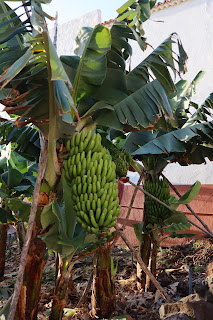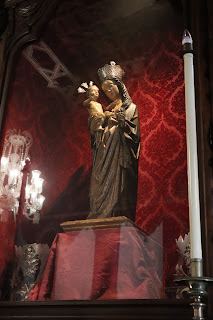The island of La Palma was the last stop on my world cruise, so it was with a bit of sadness that I dragged myself out of bed before the sun to explore.
The locals were out and about watching the strangers walking through their town.
The whole island is lousy with bananas - everyone is growing them
Our first stop was a walk through a local village near Los Llanos de Aridane, where our guide told us about the life cycle of the banana plant, and how the local farmers have perfected the process of growing them on the island. Most of the banana farms can be found on the western side of the island. They also grow bird of paradise flowers, oranges, avocados, and grapes.
Our next stop was Los Tilos Forest. Very different from our previous port, this was a lush jungle with dense vegetation. It is one of the few laurel forest strongholds left in the world. This dense, primitive forest is full of the trees that once dominated the planet millions of years ago. The forest was declared a Biosphere Reserve by UNESCO in 2002.
Hiking to the waterfall
The new bridge they built to the forest so they could make the road one-way so cars and buses could navigate the roadway.
Next, we went to Sanctuario de la Virgen de las Nieves (the Virgin of the Snows), a seventeenth-century church up in the hills. Built in the colonial style, it is a popular pilgrimage spot that houses a statue of Mary, the oldest religious statue in the Canary Islands.
Everyone piled back on the bus and we headed up to Volcano San Antonio. Our walk began at the visitors center where we learned about the geological history of the island. We walked the rim of Volcano San Antonio, which last blew in 1949, and looked down into the crater.
View from the crater to the farmland below
Hiking along the crater's rim
La Palma is also where Volcano Teneguía last erupted in 2021, and we could see the hardened lava flow going out to the ocean from the Cumbre Vieja volcanic ridge. The eruption lasted almost three months. It was the first volcanic eruption on the island since the eruption of Teneguía in 1971. The 2021 eruption destroyed more than 3,000 buildings, cut the coastal highway, and formed a new peninsula.
After plenty of hiking and fresh air, we made our way back to the ship for one last sail away. This was my last sight of land until we hit Florida. Now, to packing...

























Comments
Post a Comment